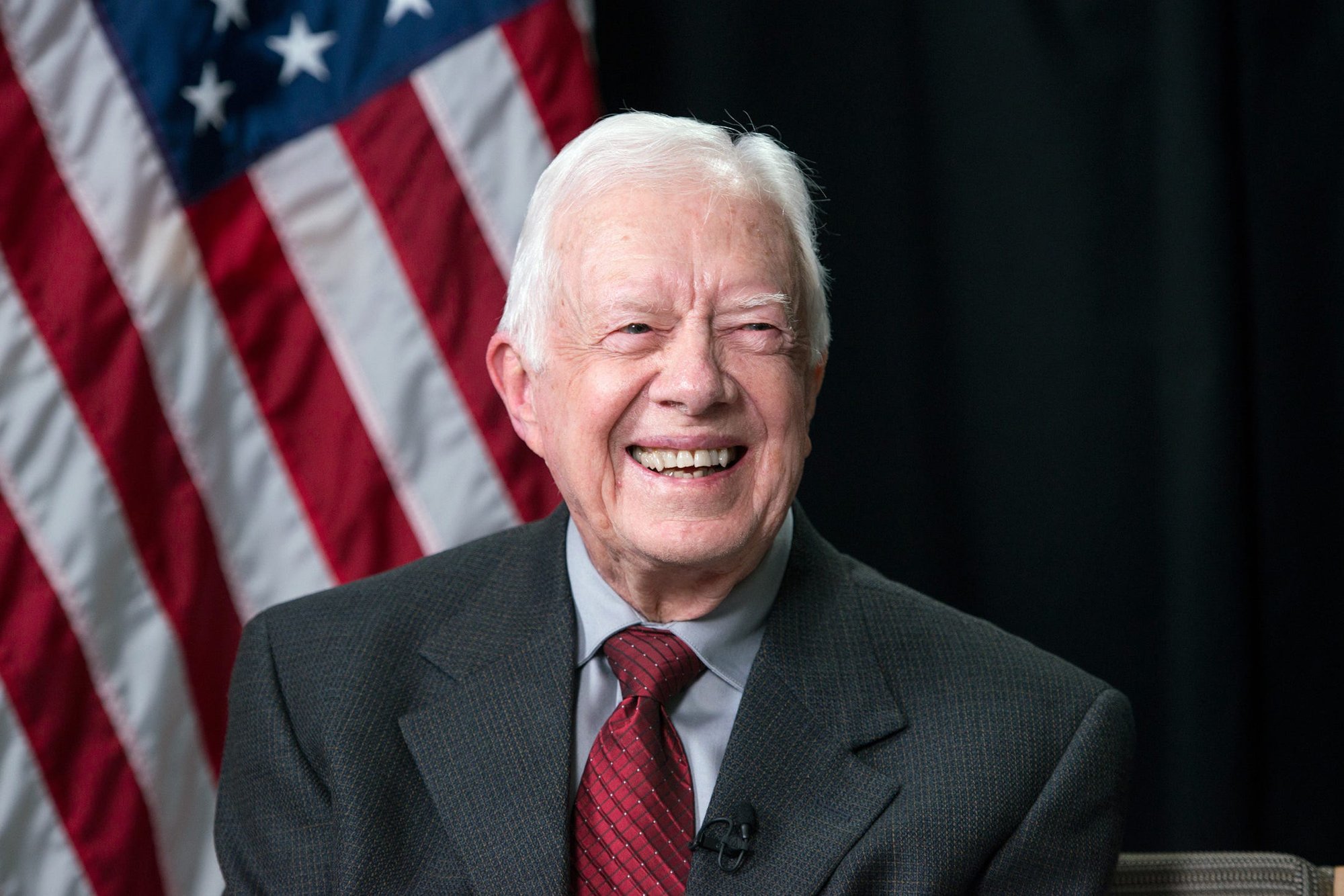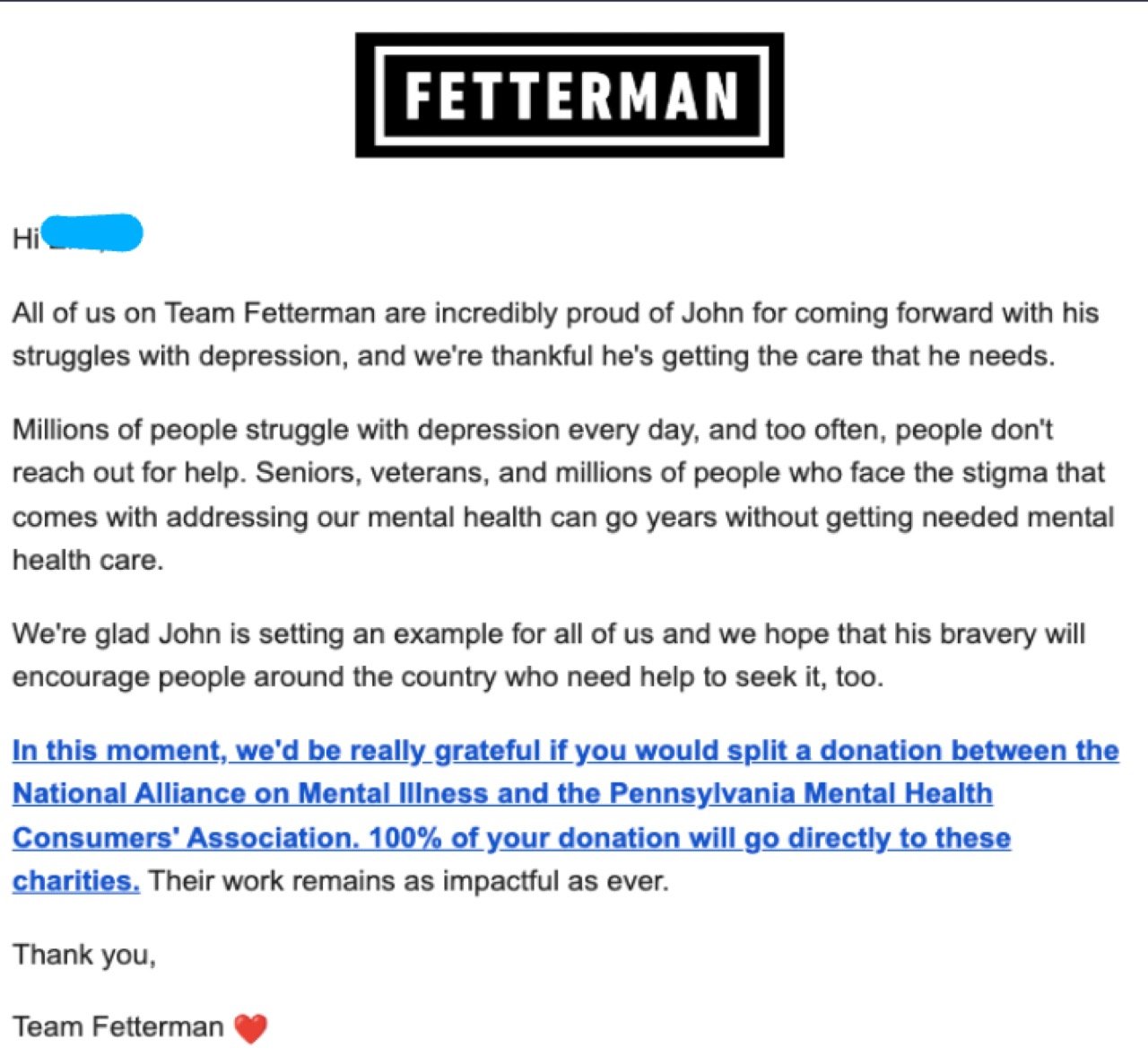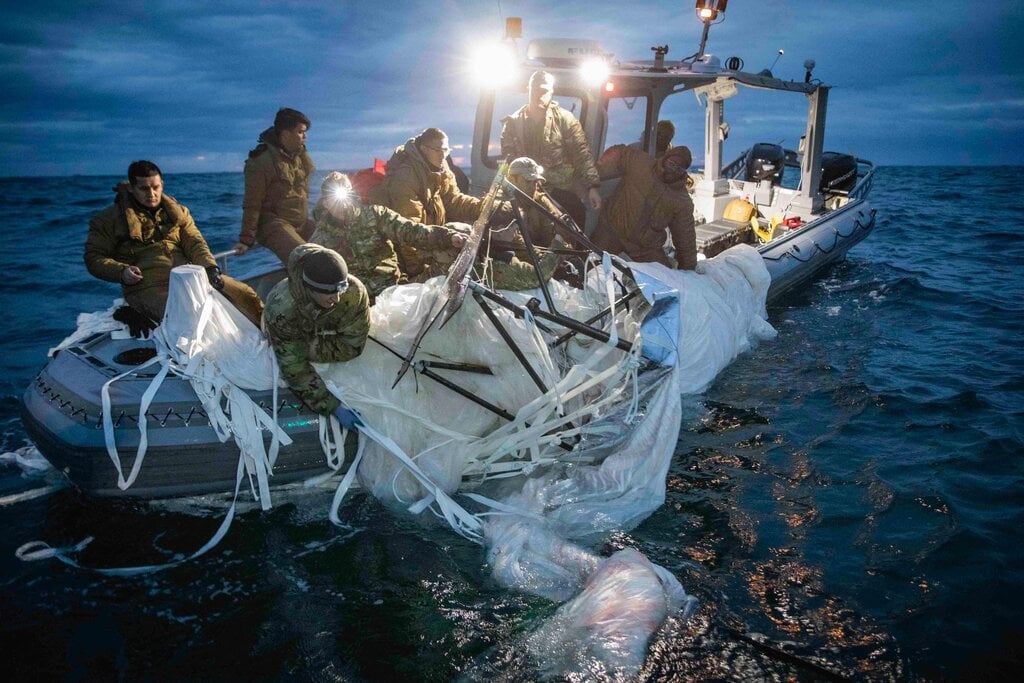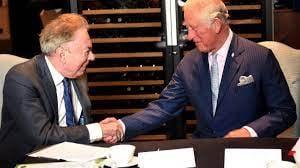Monday, February 20,2023. Annette’s News Roundup.
To read an article excerpted in this Roundup, click on its blue title. Each “blue” article is hyperlinked so you can read the whole article.
Please feel free to share.
It would be great if you invite at least one other person to subscribe today. https://buttondown.email/AnnettesNewsRoundup
——————————————-
The Munich Security Conference.

On Saturday, the Vice President of the United States declared:
“The United States has formally determined that Russia has committed crimes against humanity.”
Touch 👇 to read the White House’s release of Vice President Harris’s full remarks at Munich.
https://www.whitehouse.gov/briefing-room/statements-releases/2023/02/18/remarks-by-vice-president-harris-at-the-munich-security-conference-2/First, from the starting days of this unprovoked war, we have witnessed Russian forces engage in horrendous atrocities and war crimes. Their actions are an assault on our common values, an attack on our common humanity.
And let us be clear: Russian forces have pursued a widespread and systemic attack against a civilian population — gruesome acts of murder, torture, rape, and deportation. Execution-style killings, beatings, and electrocution.
Russian authorities have forcibly deported hundreds of thousands of people from Ukraine to Russia, including children. They have cruelly separated children from their families.
And we’ve all seen the images of the theater in Mariupol, where hundreds of people were killed.
Think of the image of the pregnant mother who was killed following a strike at a maternity hospital, where she was preparing to give birth.
Think of the images of Bucha. Civilians shot in cold blood. Their bodies left in the street. The jarring photograph of the man who was riding his bike.
Think of the four-year-old girl who the United Nations recently reported was sexually assaulted by a Russian soldier. A four-year-old child.
Barbaric and inhumane.
Long before I was Vice President of the United States, I spent the majority of my career as a prosecutor, beginning as a young lawyer in the courtroom and later running the California Department of Justice. I know firsthand the importance of gathering facts and holding them up against the law.
In the case of Russia’s actions in Ukraine, we have examined the evidence. We know the legal standards. And there is no doubt these are crimes against humanity. (Applause.)
The United States has formally determined that Russia has committed crimes against humanity.
Or watch the Vice President deliver her historic words on behalf of the United States at Munich. 1:29 minutes. 👇
———
More on the Vice President in Munich.
It was great meeting with President Macron again today. Our commitment to Ukraine endures – and the NATO alliance remains stronger than ever. pic.twitter.com/t24Q0uOQws
— Vice President Kamala Harris Archived (@VP46Archive) February 18, 2023
The United States will support Ukraine for as long as it takes. We will always stand on the side of freedom, democracy, and justice. pic.twitter.com/fo8mFvKxao
— Vice President Kamala Harris Archived (@VP46Archive) February 18, 2023
It was wonderful to meet Prime Minister Sunak in Munich. The United States and United Kingdom are close allies and friends – and together we will take on the global challenges before us. pic.twitter.com/SifiJrOGXf
— Vice President Kamala Harris Archived (@VP46Archive) February 18, 2023
I look forward to welcoming Sweden and Finland into the NATO Alliance.
— Vice President Kamala Harris Archived (@VP46Archive) February 18, 2023
It was my privilege to meet with Prime Minister Marin and Prime Minister Kristersson in Munich to discuss our shared security and shared values. pic.twitter.com/ZV6qpAWufq
Why Munich is so significant.
A large bipartisan group of American senators descended on the European gathering. Majority Leader Chuck Schumer is in attendance, as is former House Speaker Nancy Pelosi.
The Vice President headed the American delegation, clearly not just to confirm the Biden-Harris commitment to Ukraine, but to utter her historic words, charging Russia with crimes against Humanity.
But even Mitch McConnell, who does not usually travel to foreign meetings, went to Munich this year, along with more than 50 other lawmakers, the largest delegation the U.S. has ever sent, to demonstrate America’s leadership and commitment to Europe and global affairs.
McConnell's comments came at a private breakfast on Friday, with McConnell promising that the Republicans would not abandon Ukraine. The Senate Minority Leader said:
"My party’s leaders overwhelmingly support a strong, involved America and a robust trans-Atlantic alliance. Don’t look at Twitter, look at people in power. Look at me and Speaker Kevin McCarthy ... Republican leaders are committed to a strong trans-Atlantic alliance. We are committed to helping Ukraine."
One person there told Jack Detsch and Robbie Gramer of Foreign Policy, “To me, the [McConnell] subtext was clear: We’re not the crazies like the small handful of House Republicans you see in the headlines so often.” Some Republicans have expressed weariness or outright opposition to additional large supplemental assistance to Ukraine.
Oleksiy Goncharenko is a member of Ukraine’s Parliament.
On @SpeakerPelosi's arm, there's a bracelet made from Ukrainian bullet casings. I gave it to her as a reminder of how we're defending the free world, and to symbolize the enduring friendship and cooperation between our countries. pic.twitter.com/GrL7mWyDOZ
— Oleksiy Goncharenko (@GoncharenkoUa) February 18, 2023
As I depart Munich, I am motivated by the accomplishments our Allies and partners have made in support of Ukraine through collective unity, action, and sacrifice. We will remain unified and see victory for Ukrainians fighting for their country’s fate. My next stop is Türkiye. pic.twitter.com/qaBj2n0fMl
— Secretary Antony Blinken (@SecBlinken) February 19, 2023
(This section was sourced from multiple news and opinion outlets including Politico and Letters from an America.)
——————————————-
Jimmy Carter is in hospice.
As our collective thoughts turn to President Jimmy Carter in hospice, I thought you might want to read Jonathan Alter’s look back at our 39th President. Alter also wrote a full biography of Jimmy Carter.
Jimmy Carter: An Epic American Life.

Now it’s time for the public to reassess this inspiring, complex, and confounding man. When I first began researching his epic American life in 2015, I was struck by the ubiquity of the easy shorthand on him — bad president; great former president. Even now, everyone from political scientists to the average person on the street will express this idea as if it’s an established fact.
The problem is, the widespread conventional wisdom on Carter is mostly wrong.
In His Very Best: Jimmy Carter, a Life, I concluded that Carter was a hugely underrated president — a political failure but a substantive, visionary success. And he was a slightly overrated former president, despite essentially re-defining that role. In the four decades since leaving office in 1981, he achieved several important things (especially in global health) but had much less power to change lives than he did while in office.
The Jimmy Carter I got to know — in Atlanta (site of the Carter Library and Carter Center), Plains (his birthplace and lifelong home), by extensive email exchanges, building a house with him and Rosalynn in Memphis — was a highly intelligent and paradoxical man: by turns, warm and chilly; open and opaque; able and tone deaf. One day I asked Rosalynn — who shared with me his steamy love letters from the navy — if he was stubborn. She just nodded and laughed. I came to think of her husband as a driven engineer laboring to free the humanist within. He once told me that he could only express his true feelings in his poetry.
Carter has led an extraordinarily colorful life — full of surprises — and he essentially lived in three centuries. He was born in 1924, but it might as well have been the 19th Century — his family, while prosperous for the area, had no electricity, running water or mechanized equipment on the farm. He was connected to almost all of the major events and movements of the 20th Century. And the issues he tackled during his post-presidency — global health, democracy promotion and conflict resolution — are the cutting-edge challenges of the 21st.
His father, Earl, was a white supremacist; his mother, Lillian, was a nurse who took care of black sharecroppers for free and the only person in the county with anything nice to say about Abraham Lincoln. He was raised mostly by an illiterate black woman farm hand named Rachel Clark, who gave him a love of nature and God. ….click here to read Jonathan Alter’s whole article.
This was Jimmy Carter at the age of 95 helping build homes in Nashville & he hasn’t stopped since. President Carter represents the best of public service. Such a good person. Really heartbreaking to hear the news about his health. Sending so much strength. pic.twitter.com/yaIUd7IotW
— Victor Shi (@Victorshi2020) February 18, 2023
——————————————-
Look at what Senator Federman is doing.

——————————————-
Art and Politics Converge. An Art Critic weighs in on recent scenes in contemporary history.
Beauty in the Aftermath.
Documenting the recovery of a Chinese spy balloon off South Carolina, a Navy photographer produced some spectacular images with surprising art-historical undercurrents.

Petty Officer Tyler Thompson’s image of searchlight-illuminated sailors pulling the wrecked Chinese surveillance balloon into their boat off Myrtle Beach, S.C., reminded several curators and a critic of Winslow Homer’s 19th century paintings in its unusual lighting and dramatic composition.
————
On Feb. 5, after President Biden ordered a Chinese balloon that had violated American airspace to be shot down, a Navy photographer took several extraordinary photographs of Explosive Ordnance Disposal Group 2 as it collected some of the debris off the coast of Myrtle Beach, S.C.
In one of the images, which has been widely reproduced in the last two weeks, three sailors wrestle what looks like an enormous garbage bag entangled with broken scaffolding into a small boat while half a dozen of their comrades stare watchfully into space; in another, the humans are relegated to the edges and the focus is on the balloon itself, an ominous, if waterlogged, mass of wrinkled white plastic.

A missile fired on Feb. 5 off the South Carolina coast ended the days-long flight of what the Biden administration said was a spy balloon. A critic found surprising allusions in Tyler Thompson’s Navy image to “a whaling crew, pulling at the flayed blubber of their giant prey.” Credit...MC1 Tyler Thompson/U.S. Navy.
__________
The photographer in both cases was Mass Communication Specialist First Class Tyler Thompson. And somehow his images’ unusual lighting and dramatic composition, which smooth individual sailors into heroic archetypes and make the calm, pre-dawn Atlantic seawater as lush as oil paint, nearly pushed away my anxieties about rising tensions with an emerging nuclear superpower, and a sky crowded with other mysterious devices.
What they made me think of, instead, was the 19th century, and in particular the paintings of Winslow Homer, who depicted the sea often, giving it a numinous quality that could be dangerous or comradely. In “The Herring Net” (1885), which shows a fisherman and his small assistant pulling a heavy net into a small boat, the separately lit waves are helpful companions, holding up the boat’s prow and suffering along with the weather. In the first of Thompson’s Navy photos, similarly, the low, glassy surface of the water seems almost as involved in the action as the sailors — it’s bearing silent witness to what’s happening

Winslow Homer, “The Herring Net,” 1885.Credit...The Art Institute of Chicago
——————
It is a seductive photograph,” Jeff Rosenheim, head of the department of photographs at the Metropolitan Museum of Art, said in an interview, reviewing Thompson’s image of searchlight-illuminated sailors pulling the wrecked balloon into their boat. “What seduces me is the oblique way you enter it. There’s a very lyrical approach to it, a kind of poetics of description, lighting, materials.”
So did Petty Officer Thompson get lucky, or is he that good? Thompson, as it turns out, studied photography, videography and writing, as well as graphics and multimedia, at the Defense Information School at Fort Meade, Md. (The Navy said he was on leave, with no connectivity, and so was unavailable for an interview.)
Whether the composition was intentional or accidental, Sylvia Yount, head of the American Wing at the Met, found surprising art-historical resonances. She compared Thompson’s photos to the “collaborative impulse coming out of disaster” that echoed throughout “Winslow Homer: Crosscurrents,” the 2022 exhibition she co-organized at the Met. “Communities of men seem to be a focus here,” she said.
And they certainly recall “heroic narratives found in American and European history paintings,” she added, such as Emanuel Leutze’s “Washington Crossing the Delaware,” which hangs at the Met, and Théodore Géricault’s stunning “The Raft of the Medusa,” which is in the collection of the Louvre. (The New York Times once called it “a timeless memorial to the desperation of shipwrecked people.”)

Théodore Géricault, “The Raft of the Medusa,” 1818-19, which one critic called “a timeless memorial to the desperation of shipwrecked people.”
_____
There are contemporary and more concrete resonances, too, of course. Rosenheim, remembering a long-ago trip to see jellyfish at the Monterey Bay Aquarium, in California, said that the balloon made him think of a sea creature. Yount, noticing how perfectly staged the first photo looks, mentioned the photographers Gregory Crewdson and Jeff Wall, both of whom make large, carefully arranged tableaux.
But I kept coming back to the 19th century, and finally to Moby Dick. The composition in the group image evokes shipwrecks, but more than anything, the sailors look like a whaling crew, pulling at the flayed blubber of their giant prey. (There are even a few mysterious pink blotches on the trailing, tangled end of the balloon to evoke blood.) In the close-up, we come face to face with the stark white mass itself, and it’s surprising just how alien and difficult to parse it is. Its wrinkles point in all different directions, and its color, depending on where the light falls, varies from pink to green. At once lush as Renaissance drapery and sterile as a syringe, it looks like nothing hopeful or good — but all those qualities make it, like Moby Dick, an irresistible artistic subject. (Will Heinrich, New York Times).
_______________________
King Charles will be coronated on May 6th. So much is happening in behind the scenes preparations.
Anthem for Charles III’s coronation written by Lloyd Webber.

LONDON (AP) — Andrew Lloyd Webber, the English composer who created the scores for blockbuster musicals such as “Cats,’’ “The Phantom of the Opera’’ and “Evita,’’ has written the anthem for King Charles III’s coronation, adapting a piece of church music that encourages singers to make a “joyful noise.”
The work by Webber is one of a dozen new pieces Charles commissioned for the grand occasion taking place May 6 at Westminster Abbey. It includes words adapted from Psalm 98 and is scored specifically for the abbey’s choir and organ.
“I hope my anthem reflects this joyful occasion,” Webber said in a statement distributed by Buckingham Palace. (Associated Press).
——————————————-